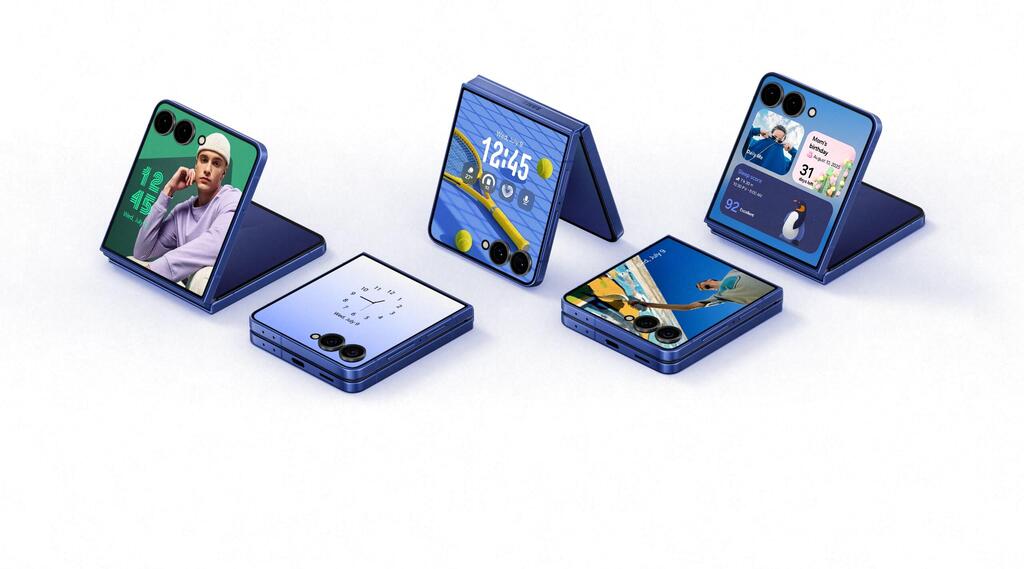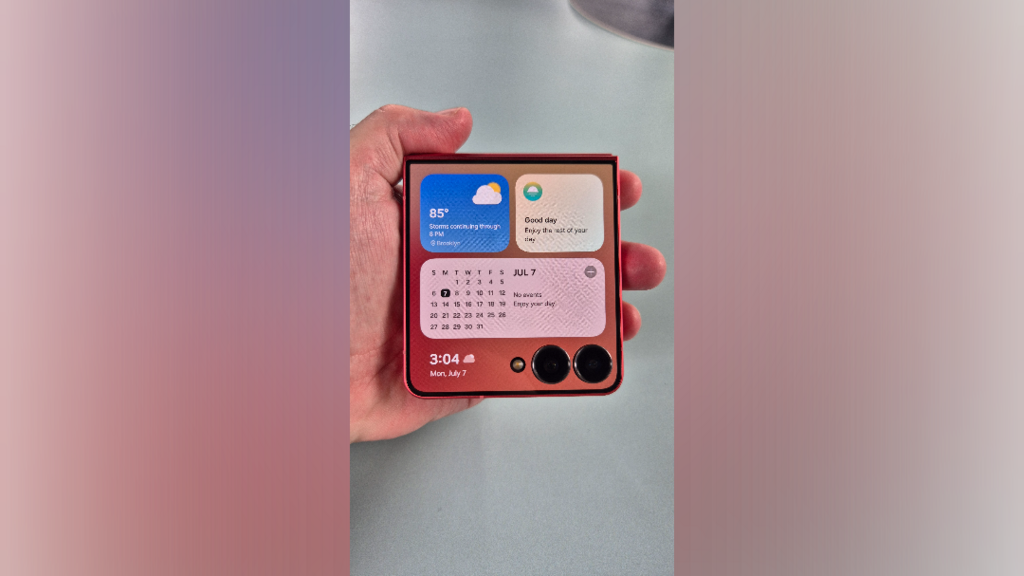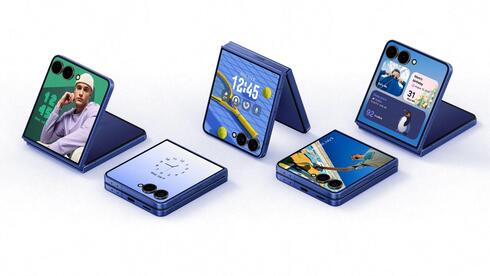“After a few weeks with the Galaxy Z Flip 7, I’m convinced foldables are the best smartphones — and I’m never going back to flat ones,” wrote veteran TechRadar reviewer Philip Byrne last week. “To say it’s an improvement over earlier Galaxy Flips would be an understatement — this is the Flip I’ve been asking Samsung to make for years.”
Byrne may be exaggerating. Of the two foldables Samsung that rolled out in Israel, the smaller Flip’s updates are far less dramatic than those of the Fold, which opens into a tablet. The Fold has gone on a notable “diet” this year, looking almost like a standard smartphone when closed.
3 View gallery

Samsung Galaxy Z Flip 7
(Photo: Samsung)
The Flip’s main upgrades are more modest: it is slimmer and slightly wider than its predecessor, and Samsung has removed the thick black frame around the camera lenses that previously cut into the display area. Its redesigned cover screen has also grown to 4.1 inches, allowing users — at least in principle — to do almost anything without opening the phone: snap selfies, read and reply to messages, check email, talk to the voice assistant, even browse ynet.
It’s not always convenient, but it works. When the lenses block key parts of an app, Samsung added a small navigation bar icon that lets users switch to two alternative layouts: a “compressed” view above the cameras, or a vertical display.
Overall, the Flip has closed the gap in performance and hardware with Samsung’s standard Galaxy S25. It’s essentially the same device — with the open Flip’s 6.9-inch screen even larger — plus the advantages of folding and an extra display. For buyers willing to spend roughly 1,200 shekels more for those features, the Flip may truly deliver: a smartphone with top-tier performance that folds neatly into a pocket or rests discreetly in the palm of a hand.
It may be hard to believe, but according to international research firms, foldable smartphones still account for no more than 2 percent of the global market. Not just Samsung, but also its Chinese rivals are puzzling over the same question: why aren’t they more popular?
3 View gallery


Samsung Galaxy Z Flip 7
(Photo: Israel Wullman)
The answers are likely many. First, the price: the technology that enables folding screens remains especially costly. Second, durability: even the Flip’s seventh-generation model is not fully dust-resistant (rated IP48). Third, despite years of progress, foldables’ cameras still trail behind those in flagship phones — lacking, for example, an optical zoom. Finally, their batteries, at least until now, have not been particularly impressive.
The 2025 Flip shows signs of a maturing category. True, the awkwardness of opening the device remains — it still requires two hands, and there’s no quick-spring button to help. But it is lightweight, elegantly designed with a restrained matte finish and a slim, symmetrical frame, and thinner than before — just 1.3 centimeters when folded.
Its battery has been upgraded from 4,000 mAh in the Flip 6 to 4,300 mAh, lasting more than a full day of use in tests. The crease created by the central hinge is less noticeable than in past models. The display now reaches up to 2,600 nits of brightness and supports a variable refresh rate of up to 120 Hz.
This year, Samsung is powering the Flip 7 with its own Exynos 2500 chip, replacing Qualcomm’s traditional processors. Built on a 3-nanometer process, it is the Korean company’s first of its kind — more energy efficient, optimized for advanced artificial intelligence tasks, supporting image processing, still photography up to 320 megapixels and video recording in 8K resolution.
The phone also supports WiFi 7 and Bluetooth 5.4. By returning control of the core chipset to itself, Samsung says it can integrate hardware and software more tightly, improve performance and efficiency, and strengthen its independence. The processor is backed by 12 GB of RAM.
Together, these power Google’s newest Android 16 operating system and Samsung’s refreshed One UI 8 interface. AI capabilities are more expansive: with Gemini Live, the Google assistant, users can point the camera at themselves and ask for advice on their evening outfit in natural speech.
Other AI-driven features in the new Galaxy lineup include “Photo Assist” (to move or remove objects in the background), “Audio Eraser” (to detect and strip unwanted background noise), “Drawing Assist” (to transform sketches into images), “Writing Assist” (to polish text), and more.
Beyond its excellent stereo speakers (one at the bottom and one doubling as the earpiece), the cameras remain unchanged this year on the Galaxy Z Flip 7. The phone features the same strong dual-lens system as its predecessor, though now producing slightly better results thanks to improved image processing. It includes a 50-megapixel main camera with optical stabilization and 4K video recording at up to 60 frames per second, and a 12-megapixel ultra-wide lens.
3 View gallery


Samsung Galaxy Z Flip 7
(Photo: Samsung)
When closed, those front-facing lenses — set beside the external cover screen — allow something no non-foldable phone can: taking high-quality selfies with zoom options and variable aspect ratios, using the cover display as a preview window.
The device is clad front and back with Gorilla Glass Victus 2 and rated IP48 for dust and water resistance — meaning it can withstand dust particles up to 1 millimeter and immersion in 1.5 meters of water for up to 30 minutes. That falls short of the IP68 standard of flagship smartphones, which are fully sealed, but for a folding device it represents a technical achievement given the sensitivity of the hinge mechanism.
A promising but lesser-known feature arriving for the first time on the Flip 7 is Samsung DeX, which turns the phone into a makeshift desktop workstation: connect wirelessly to a larger screen and access a computer-like interface. Google is expected to adopt the concept soon as well.
Pricing in Israel is set at 4,100 shekels for the 256GB version and 4,550 shekels for the 512GB model.
Pros: compact form, larger display, improved battery, expanded AI features.
Cons: only partial dust resistance, slow charging speeds.
